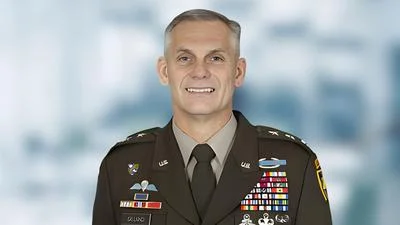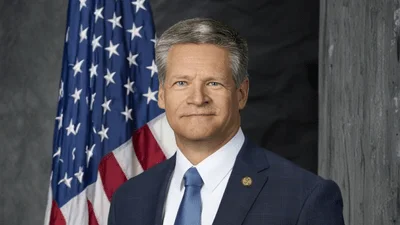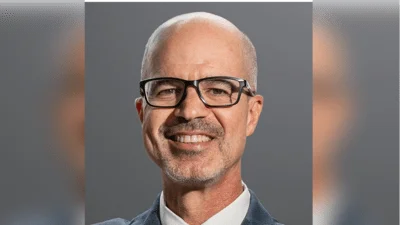The Congressional Record is a unique source of public documentation. It started in 1873, documenting nearly all the major and minor policies being discussed and debated.
“CHILD PASSENGER PROTECTION ACT” mentioning the U.S. Dept. of Transportation was published in the Senate section on pages S986-S987 on Feb. 25, 2002.
The publication is reproduced in full below:
CHILD PASSENGER PROTECTION ACT
Mr. REID. Madam President, I ask unanimous consent that the Senate proceed to the consideration of S. 980, Calendar No. 317.
The PRESIDING OFFICER. The clerk will report the bill by title.
The legislative clerk read as follows:
A bill (S. 980) to provide for the improvement of the safety of child restraints in passenger motor vehicles, and for other purposes.
There being no objection, the Senate proceeded to consider the bill, which had been reported from the Committee on Commerce, Science, and Transportation with an amendment in the nature of a substitute to strike out all after the enacting clause and insert in lieu thereof the following:
SECTION 1. SHORT TITLE.
This Act may be cited as the ``Anton's Law''.
SEC. 2. IMPROVEMENT OF SAFETY OF CHILD RESTRAINTS IN
PASSENGER MOTOR VEHICLES.
(a) In General.--Not later than 12 months after the date of the enactment of this Act, the Secretary of Transportation shall initiate a rulemaking proceeding to establish performance requirements for child restraints, including booster seats, for the restraint of children weighing more than 50 pounds.
(b) Elements for Consideration.--In the rulemaking proceeding required by subsection (a), the Secretary shall--
(1) consider whether to include injury performance criteria for child restraints, including booster seats and other products for use in passenger motor vehicles for the restraint of children weighing more than 40 pounds, under the requirements established in the rulemaking proceeding;
(2) consider whether to establish performance requirements for seat belt fit when used with booster seats and other belt guidance devices;
(3) consider whether to develop a solution for children weighing more than 40 pounds who only have access to seating positions with lap belts, such as allowing tethered child restraints for such children; and
(4) review the definition of the term ``booster seat'' in Federal motor vehicle safety standard No. 213 under section 571.213 of title 49, Code of Federal Regulation, to determine if it is sufficiently comprehensive.
(c) Completion.--The Secretary shall complete the rulemaking proceeding required by subsection (a) not later than 30 months after the date of the enactment of this Act.
SEC. 3. REPORT ON DEVELOPMENT OF CRASH TEST DUMMY SIMULATING
A 10-YEAR OLD CHILD.
Not later than 120 days after the date of the enactment of this Act, the Secretary of Transportation shall submit to the Committee on Commerce, Science, and Transportation of the Senate and the U.S. House of Representatives Committee on Energy and Commerce a report on the current schedule and status of activities of the Department of Transportation to develop, evaluate, and certify a commercially available dummy that simulates a 10-year old child for use in testing the effectiveness of child restraints used in passenger motor vehicles.
SEC. 4. REQUIREMENTS FOR INSTALLATION OF LAP AND SHOULDER
BELTS.
(a) In General.--Not later than 24 months after the date of the enactment of this Act, the Secretary of Transportation shall complete a rulemaking proceeding to amend Federal motor vehicle safety standard No. 208 under section 571.208 of title 49, Code of Federal Regulations, relating to occupant crash protection, in order to--
(1) require a lap and shoulder belt assembly for each rear designated seating position in a passenger motor vehicle with a gross vehicle weight rating of 10,000 pounds or less, except that if the Secretary determines that installation of a lap and shoulder belt assembly is not practicable for a particular designated seating position in a particular type of passenger motor vehicle, the Secretary may exclude the designated seating position from the requirement; and
(2) apply that requirement to passenger motor vehicles in phases in accordance with subsection (b).
(b) Implementation Schedule.--The requirement prescribed under subsection (a)(1) shall be implemented in phases on a production year basis beginning with the production year that begins not later than 12 months after the end of the year in which the regulations are prescribed under subsection (a). The final rule shall apply to all passenger motor vehicles with a gross vehicle weight rating of 10,000 pounds or less that are manufactured in the third production year of the implementation phase-in under the schedule.
(c) Report on Determination To Exclude.--
(1) Requirement.--If the Secretary determines under subsection (a)(1) that installation of a lap and shoulder belt assembly is not practicable for a particular designated seating position in a particular type of motor vehicle, the Secretary shall submit to the Committee on Commerce, Science, and Transportation of the Senate and the U.S. House of Representatives Committee on Energy and Commerce a report specifying the reasons for the determination.
(2) Deadline.--The report under paragraph (1) shall be submitted, if at all, not later than 30 days after the date on which the Secretary issues a final rule under subsection
(a).
SEC. 5. TWO-YEAR EXTENSION OF CHILD PASSENGER PROTECTION
EDUCATION GRANTS PROGRAM.
Section 2003(b)(7) of the Transportation Equity Act for the 21st Century (23 U.S.C. 405 note; 112 Stat. 328) is amended by striking ``and 2001.'' and inserting ``through 2003.''
SEC. 6. GRANTS FOR IMPROVING CHILD PASSENGER SAFETY PROGRAMS.
(a) In General.--Chapter 4 of title 23, United States Code, is amended by adding at the end the following new section:
``Sec. 412. Grant program for improving child passenger safety programs
``(a) Standards and Requirements Regarding Child Restraint Laws.--Not later than October 1, 2002, the Secretary shall establish appropriate criteria applicable to child restraint laws for purposes of eligibility for grants under this section. The criteria shall be consistent with the provisions of Anton's Law.
``(b) Requirement To Make Grants.--
``(1) In general.--The Secretary shall make a grant to each State and Indian tribe that, as determined by the Secretary, has a child restraint law in effect on September 30, 2004.
``(2) Limitation on number of grants.--Not more than one grant may be made to a State or Indian tribe under this section.
``(3) Commencement.--The requirement in paragraph (1) shall commence on October 1, 2004.
``(c) Grant Amount.--The amount of the grant to a State or Indian tribe under this section shall be the amount equal to five times the amount provided to the State or Indian tribe, as the case may be, under section 2003(b)(7) of the Transportation Equity Act for the 21st Century (23 U.S.C. 405 note) in fiscal year 2003.
``(d) Use of Grant Amounts.--
``(1) In general.--A State or Indian tribe shall use any amount received by the State or Indian tribe, as the case may be, under this section to carry out child passenger protection programs for children under the age of 16 years, including programs for purposes as follows:
``(A) To educate the public concerning the proper use and installation of child restraints, including booster seats.
``(B) To train and retain child passenger safety professionals, police officers, fire and emergency medical personnel, and educators concerning all aspects of the use of child restraints.
``(C) To provide child restraint systems, including booster seats and the hardware needed for their proper installation, to families that cannot otherwise afford such systems.
``(D) To support enforcement of the child restraint law concerned.
``(2) Limitation on federal share.--The Federal share of the cost of a program under paragraph (1) that is carried out using amounts from a grant under this section may not exceed 80 percent of the cost of the program.
``(e) Administrative Expenses.--The amount of administrative expenses under this section in any fiscal year may not exceed the amount equal to five percent of the amount available for making grants under this section in the fiscal year.
``(f) Applicability of Chapter 1.--The provisions of section 402(d) of this title shall apply to funds authorized to be appropriated to make grants under this section as if such funds were highway safety funds authorized to be appropriated to carry out section 402 of this title.
``(g) Definitions.--In this section:
``(1) Child restraint law.--The term `child restraint law' means a law that--
``(A) satisfies standards established by the Secretary under Anton's Law for the proper restraint of children who are over the age of 3 years or who weigh at least 40 pounds;
``(B) prescribes a penalty for operating a passenger motor vehicle in which any occupant of the vehicle who is under the age of 16 years is not properly restrained in an appropriate restraint system (including seat belts, booster seats used in combination with seat belts, or other child restraints); and
``(C) meets any criteria established by the Secretary under subsection (a) for purposes of this section.
``(2) Passenger motor vehicle.--The term `passenger motor vehicle' has the meaning given that term in section 405(f)(5) of this title.
``(3) State.--The term `State' has the meaning given in section 101 of this title and includes any Territory or possession of the United States.''.
(b) Clerical Amendment.--The table of sections at the beginning of that chapter is amended by inserting after the item relating to section 411 the following new item:
``412. Grant program for improving child passenger safety programs.''.
SEC. 7. DEFINITIONS.
In this Act:
(1) Child restraint.--The term ``child restraint'' means any product designed to provide restraint to a child
(including booster seats and other products used with a lap and shoulder belt assembly) that meets applicable Federal motor vehicle safety standards prescribed by the National Highway Traffic Safety Administration.
(2) Production year.--The term ``production year'' means the 12-month period between September 1 of a year and August 31 of the following year.
(3) Passenger motor vehicle.--The term ``passenger motor vehicle'' has the meaning given that term in section 405(f)(5) of title 23, United States Code.
SEC. 8. AUTHORIZATION OF APPROPRIATIONS.
There are authorized to be appropriated to the Secretary of Transportation such sums as may be necessary to carry out this Act, including the making of grants under section 412 of title 23, United States Code, as added by section 6.
Mr. REID. Madam President, I ask unanimous consent that the substitute amendment be agreed to, the bill, as amended, be read three times and passed, the motion to reconsider be laid upon the table, and any statements relating to the bill be printed in the Record.
The PRESIDING OFFICER. Without objection, it is so ordered.
The committee amendment in the nature of a substitute was agreed to.
The bill (S. 980), as amended, was read the third time and passed.
Mr. REID. Madam President, I suggest the absence of a quorum.
The PRESIDING OFFICER. The clerk will call the roll.
The legislative clerk proceeded to call the roll.
Ms. COLLINS. Madam President, I ask unanimous consent that the order for the quorum call be rescinded.
The PRESIDING OFFICER. Without objection, it is so ordered.
The Senator from Maine.
(The remarks of Ms. Collins and Mr. Reed are printed in today's Record under ``Morning Business.'')
The PRESIDING OFFICER (Mr. Nelson of Nebraska). In my capacity as the Senator from Nebraska, I suggest the absence of a quorum.
The clerk will call the roll.
The legislative clerk proceeded to call the roll.
Ms. COLLINS. Mr. President, I ask unanimous consent the order for the quorum call be dispensed with.
The PRESIDING OFFICER. Without objection, it is so ordered.
____________________








